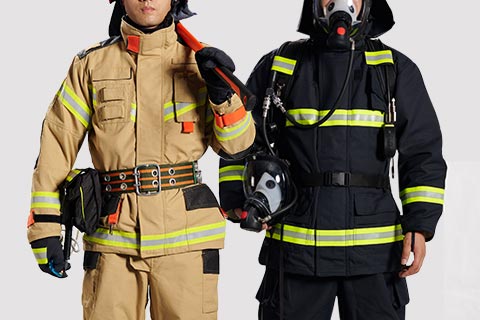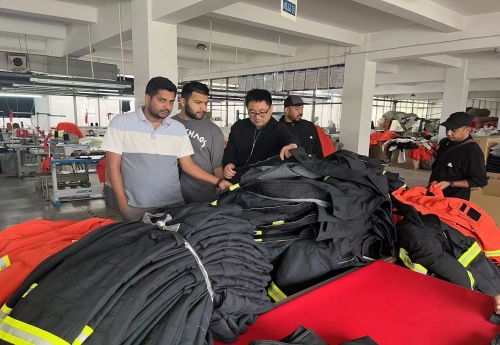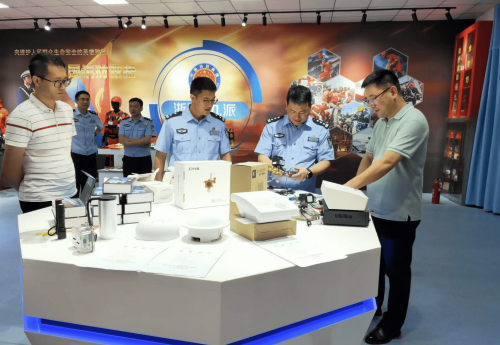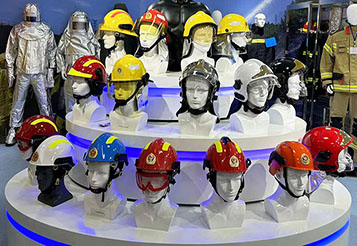Why is FR Clothing so Expensive?
Flame resistant Clothing (FRC) is an indispensable piece of safety equipment in many occupations. Whether you're a firefighter in the line of fire, a welder in the heat, a race car driver in the wind, or an industrial worker in a complex environment, FRCs like those offered by Sentinel Safety provide a strong defence against burns and heat damage. But FRCs can be expensive compared to ordinary clothing. Let's take a closer look at what makes this life-saving gear so expensive.
FR Clothing Made With Specialized Fire Resistant Fabric Materials
The key to the high price of FRC is the material it is made from. Unlike cotton or polyester, which are commonly used in everyday clothing, FRC is made from specially treated fabrics or fibres that are inherently flame retardant. Some of the most common materials used are as follows.Aramid fibres: Kevlar is a typical example, known for its strength and excellent heat resistance. It maintains stable physical properties in the face of high temperatures and prevents heat conduction.
Mesoaromatic polyamide fibres: Nomex is a popular choice, with excellent heat and flame resistance properties and a relatively light weight that reduces the burden on the wearer without compromising protection.
Treated fabrics: Like cotton or other natural fibres, they can be chemically treated to obtain flame retardant properties. It should be noted, however, that the effects of such treatments are not permanent and often need to be renewed periodically to continue the flame retardant effect.
These materials are subjected to rigorous testing to ensure that they meet specific safety standards set by regulatory agencies. Furthermore, the manufacturing process for these fabrics is extremely complex, often requiring specialised equipment, which further drives up costs.
Durability and Maintenance of FR Clothing
Flame-retardant clothing is tasked with withstanding extreme conditions, including high temperatures, flames and splashes of molten metal. This requires a more robust construction than normal clothing. For example, seams are often double- or even triple-stitched for extra strength, and there are often additional reinforcements in high-wear areas such as the elbows and knees.However, such durability doesn't come for free - FRC often requires special care and maintenance to maintain its flame retardant properties at all times. If not washed or dried properly, the effectiveness of the flame retardant treatment may be compromised. Some FRCs even specify that they must be dry-cleaned or that specific cleaning instructions be followed.
Compliance and Certification Increased costs of FR Clothing
Many industries have regulations mandating the use of FRCs that comply with specific safety standards set by authorities such as the National Fire Protection Association (NFPA) or, on a global scale, the International Organisation for Standardisation (ISO).In order for FRC manufacturers to comply with these regulations, they must go through a rigorous testing and certification process. This adds significant costs to the production process.
Material Requirements.
In accordance with NFPA 2112, FR base fabrics for apparel must be inherently flame retardant and not be dependent on treatments that are prone to failure at a later stage. o Fabrics such as aramid blends, which are widely used for their natural flame retardant properties, must have the ability to retain their flame retardant properties.The material must be durable enough to retain its flame retardant properties in everyday use, such as bending, stretching and rubbing.
ISO 11612 emphasises that additives or treatments used to enhance flame retardancy must not impair the mechanical strength and chemical stability of the fabric. Properties
Performance Requirements.
In terms of flame retardancy, according to the NFPA standard, the garment should pass the vertical flame test, the fabric can be quickly extinguished in case of fire, and the flame is spreading. The speed of flame extension is slow, and the amount of charring is within the acceptable range.Good heat resistance, IS0 standards often specify the maximum temperature that the garment can withstand, such as a short period of time to withstand high temperatures of 500 degrees Celsius, while maintaining structural integrity and flame retardant properties.
Manufacturing Process Requirements.
NFPA requires that seams and joints of garments should be reinforced with double-needle stitching or flame-retardant thread to prevent flame penetration.Components such as pockets and zips should be secure and flame retardant, and zips need to be made of fire-resistant material and operate smoothly. o
Garment size and fit should be reasonable, loose enough to ensure freedom of movement and not too fat to cause safety hazards. o In addition, the ISO2 standard requires labelling of garments to indicate compliance standards, washing instructions and restrictions on use.
FR Clothing Features Meet the Diverse Needs of the Price Increase
According to specific use scenarios, FRC may incorporate a number of other features, which in turn affects its price. These features include.Moisture management: For firefighters and other workers who work hard in hot environments, FRCs that absorb perspiration and keep them cool are particularly important, effectively enhancing work comfort without compromising protection.
High visibility elements: for workers in low light conditions, FRCs incorporate reflective strips or fluorescent colours to significantly increase the wearer's visibility and reduce the risk of accidents.
Antistatic properties: In environments where there is a risk of explosion caused by static electricity, the FRC can be treated with antistatic agents to eliminate potential safety hazards.
FR Clothing Balance Cost with Safety
While the cost of FRC is certainly a factor to be considered, it is important to remember that it is an important investment in safety. In industries where there is a risk of exposure to flames, heat or molten materials, FRC is a critical barrier that can prevent serious injuries and even fatalities.When evaluating the cost of FRC, consider the following.
The level of protection required: Different jobs have different risk profiles. Firefighters, for example, obviously require a higher level of protection than those working in general flammable environments.
Life expectancy of the garment: Depending on the actual frequency of use and the quality of the fabric, the replacement cycle for FRCs will vary. Frequent use and lesser quality fabrics may require more frequent replacement.
Finding value in FRC: cost-effective strategies
How to find the Cost effective FR Clothing
Shop around: Compare prices from a wide range of manufacturers and retailers to find the best value for money.Consider used FRCs: If used clothing is in good condition and meets safety standards, this can be a viable option and can result in some savings.
Proper Care and Maintenance: Strictly following the manufacturer's instructions can extend the life of the FRC and spread the cost.
Ultimately, when weighing the cost of an FRC, the potential consequences of not wearing it must be taken into account. For workers in high-risk environments, the FRC is an essential piece of safety equipment that provides invaluable and irreplaceable protection. By choosing quality flame retardant clothing, you are adding a solid insurance policy for your safety.
Next Article:
Last Article:
Request A Quote
Related News
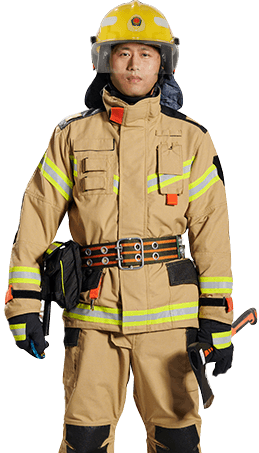
Quick Consultation
We are looking forward to providing you with a very professional service. For any
further information or queries please feel free to contact us.

